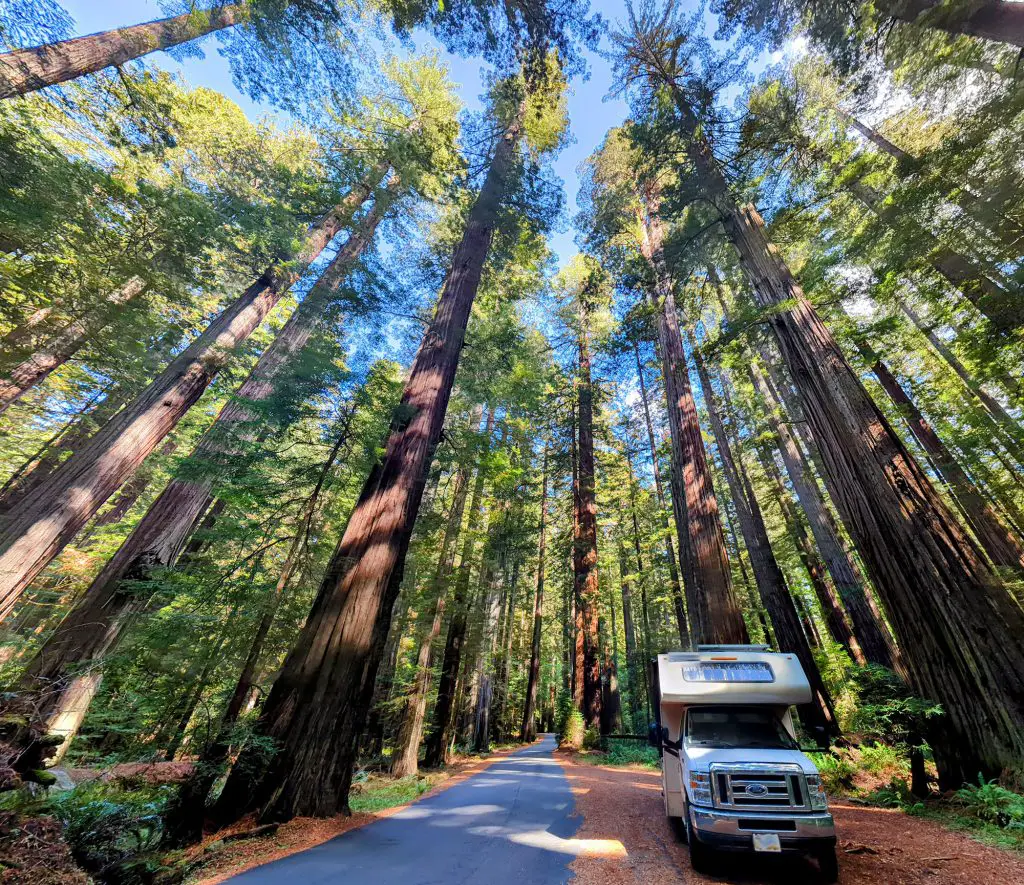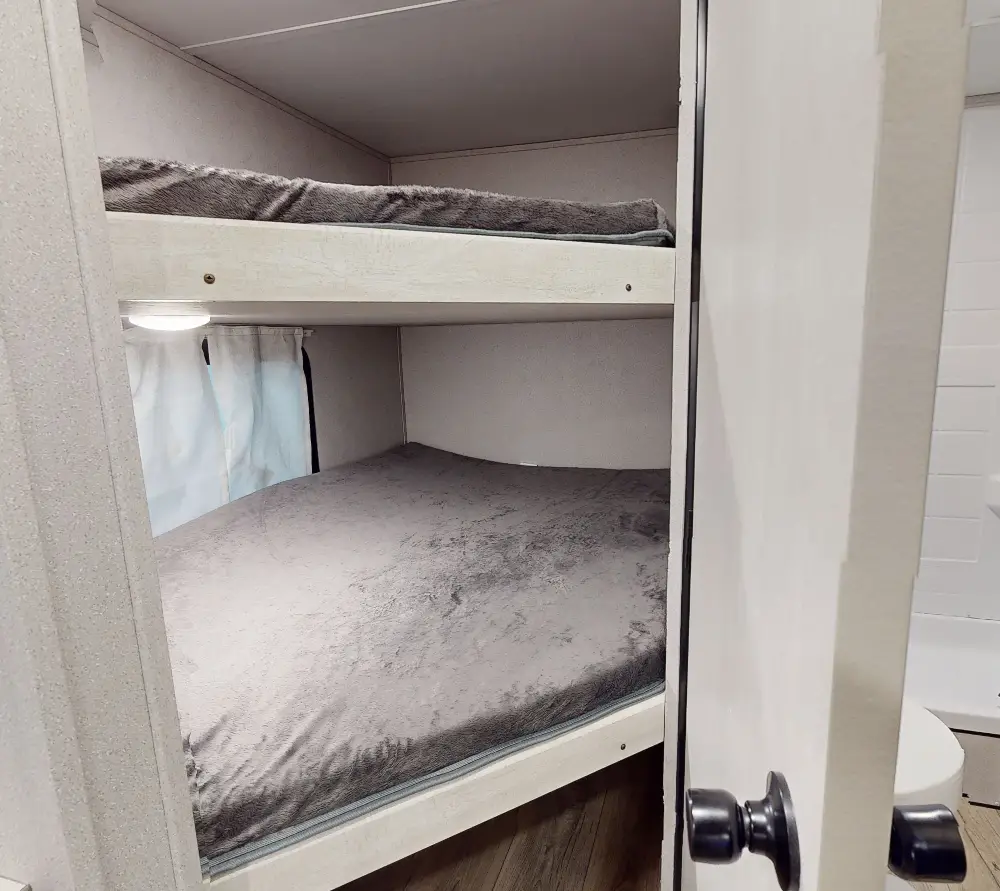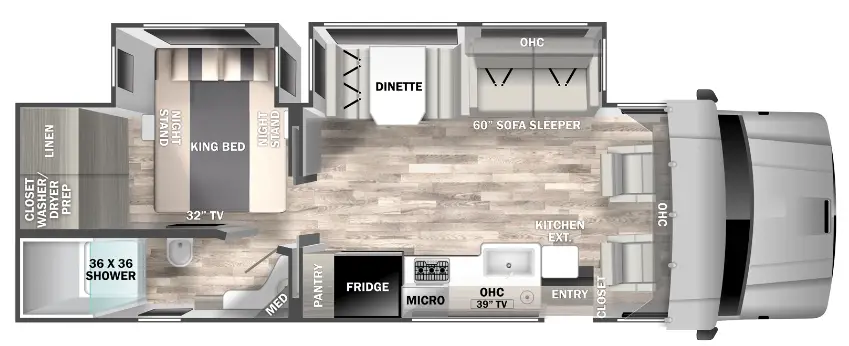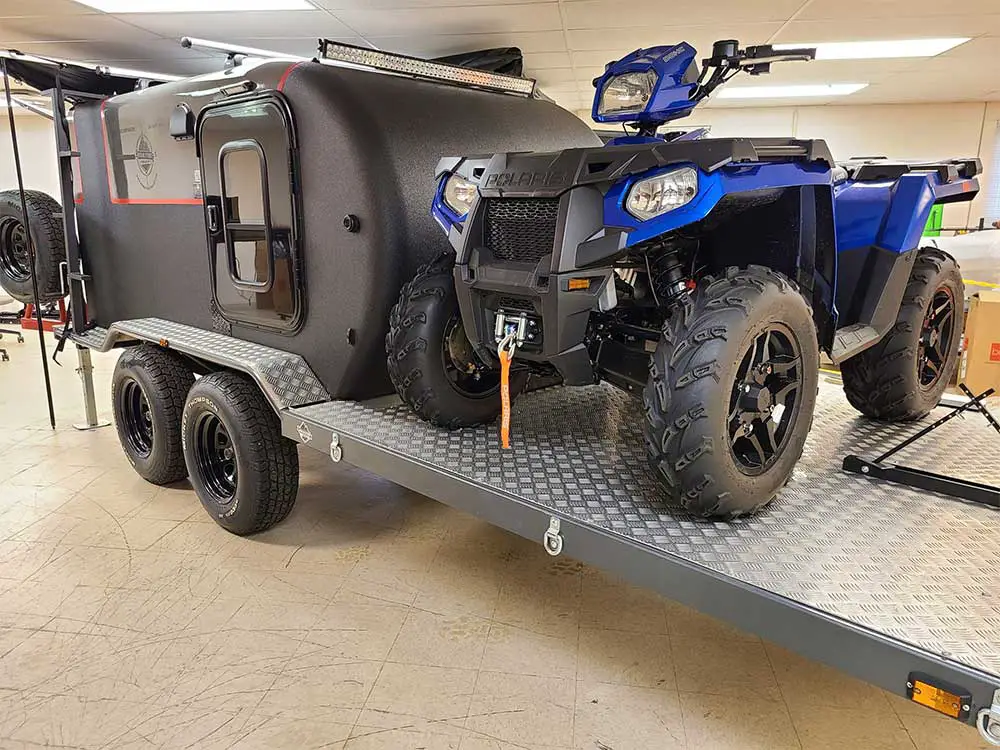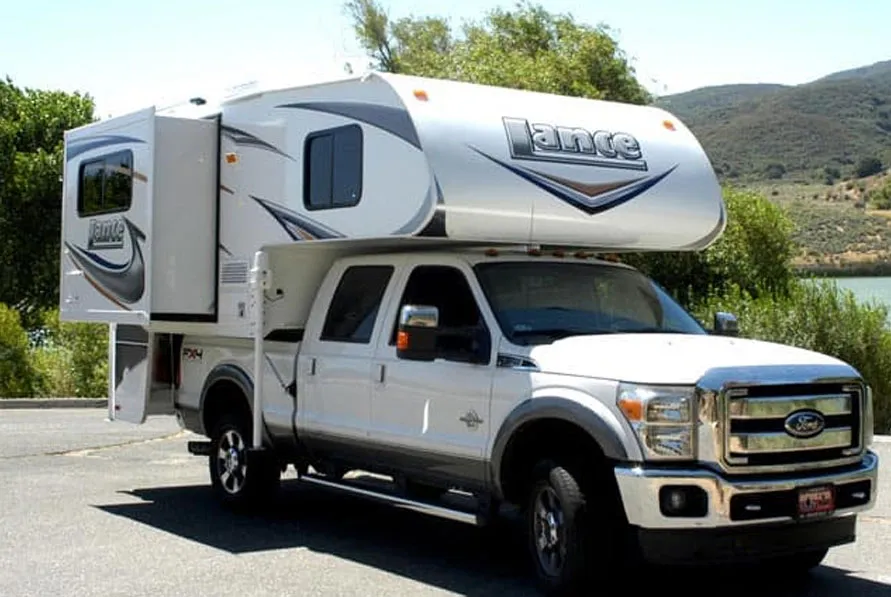Last Updated on February 13, 2024
Key Takeaways:
- Types of RVs:
-
- Class A: Large, bus-like vehicles with spacious interiors but challenging to maneuver and less fuel-efficient.
- Class B: Camper vans with raised roofs, offering convenience and better gas mileage.
- Class C: Built on a van or truck chassis, providing compact living spaces with extended sleeping areas.
- Travel Trailers: Towing vehicles with various sizes and amenities, suitable for extended travel.
- Fifth Wheel Trailers: Larger trailers with motorhome features, offering maximum comfort on the road.
- Conversions: Vans or buses converted into RVs, offering customization options but can be time-consuming.
- Campervans: Compact vans modified to provide basic living amenities, easy to park but limited in space.
- Pop-Up Campers: Trailers with collapsible tents, lightweight and suitable for smaller vehicles.
- Truck Campers: Attachments for pickup trucks, offering compact living space without towing.
- Toy Haulers: RVs with storage space for recreational vehicles, heavy but versatile for outdoor enthusiasts.
- Teardrop Campers: Lightweight trailers with basic amenities for compact travel.
-
- Considerations: Factors to consider include size, amenities, driving and towing capabilities, fuel efficiency, parking options, and personal preferences.
- Flexibility: Many RV types offer the flexibility to detach from the trailer or explore local areas, providing convenience for travelers.
- Conversion Options: DIY projects offer customization but can be time-consuming, while professional conversions offer quality with less control over customization and cost.
- Experience and Adaptability: RV living often involves starting with one type of RV and switching based on experience and evolving needs.
Before you start considering buying your first RV you need to know what types of RVs are out there. Living in an RV is starting to be so popular, that more and more younger people are giving up their “American dream” of owning a home. After all, your house is never truly yours because of the taxes you pay, then the maintenance costs, and HOA fees, not even mentioning that you most likely pay 50-100% more back to your bank in interest over the years. It just costs way too much. So let’s see your options when it comes to RVs:
What You Need To Know About The Different Types of RVs
Depending on what you want, and how many of you want to live there, there are several options you have when it comes to choosing the right vehicle. Below is everything you need to know about the different RV or trailer options out there, so you can pick the best fit for you and your future travel plans. You most likely will change the first RV after living in it for a year or so like most of us do. By then you will have a better idea of what you want and don’t want.
Class A RVs
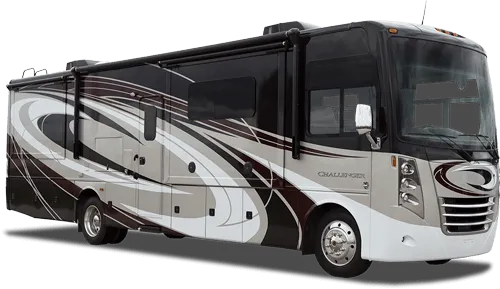 These RVs are like big buses and are typically the best for traveling the country in comfort. In addition to a larger bed, you get a bathroom with a shower, a living room, and way more space. You also get storage space in the form of an RV basement with Class A vehicles for your stuff. In case you need additional space, these RVs typically come with slide-outs to be used when you are parked. One of the biggest drawbacks to the Class A RV is their size as you need to accommodate their large size when you look for places to park or when you are driving on narrow roads. They are also not as fuel-efficient as other smaller RV options.
These RVs are like big buses and are typically the best for traveling the country in comfort. In addition to a larger bed, you get a bathroom with a shower, a living room, and way more space. You also get storage space in the form of an RV basement with Class A vehicles for your stuff. In case you need additional space, these RVs typically come with slide-outs to be used when you are parked. One of the biggest drawbacks to the Class A RV is their size as you need to accommodate their large size when you look for places to park or when you are driving on narrow roads. They are also not as fuel-efficient as other smaller RV options.
Class B RVs
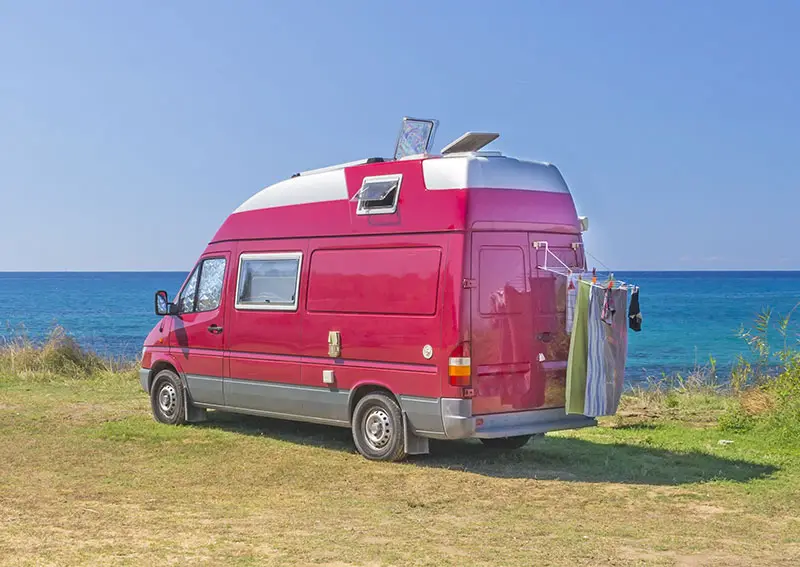 These are built on a camper van base and modified to have a raised roof so they are larger. They are more limited in terms of amenities but you can comfortably stand and move around the RV. Most models will have a small kitchen and bathroom as well as a bed. Typically Class B RVs are for no more than 2 people and are often chosen for their convenience. These RVs are easier to drive than the larger Class A models, and they are much easier to maneuver on roads and park in campgrounds and RV sites. You can even park with these in cities overnight without anyone noticing you are in there. These have better gas mileage, making them preferred over the Class A options, but they are not as comfortable. Depending on how much time you plan on spending in the RV, this may be a more economical choice.
These are built on a camper van base and modified to have a raised roof so they are larger. They are more limited in terms of amenities but you can comfortably stand and move around the RV. Most models will have a small kitchen and bathroom as well as a bed. Typically Class B RVs are for no more than 2 people and are often chosen for their convenience. These RVs are easier to drive than the larger Class A models, and they are much easier to maneuver on roads and park in campgrounds and RV sites. You can even park with these in cities overnight without anyone noticing you are in there. These have better gas mileage, making them preferred over the Class A options, but they are not as comfortable. Depending on how much time you plan on spending in the RV, this may be a more economical choice.
Class C RVs
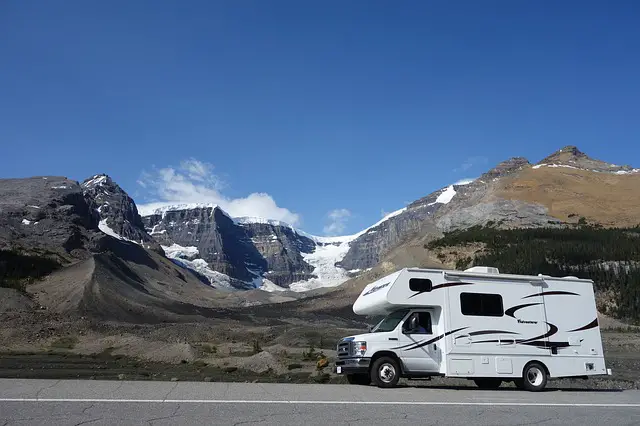 These RVs are built on a van or truck chassis with an extended sleeping area that goes over the cab. You can easily move between the driving and living spaces and the extended cab allows for more room to be available inside. You typically get a small bathroom, sink, and fridge, and options such as stoves, TVs, or additional sleeping space can be available in certain models. Because the amount of space is smaller than in Class A ones, consider getting a model that comes with a slide-out for the additional space and comfort. (I personally don’t want to deal with the problems arising by having a slide out, so mine doesn’t have it). These RVs are much easier to drive and are ideal for first-timers. In fact, it is not much different than driving a Haul moving truck. There are, however, larger Class C models that can be as difficult to master as the Class A RVs, so make sure you only buy or rent what you can safely handle on the road. Should you get a larger Class C RV, be sure to practice with it before hitting the open roads.
These RVs are built on a van or truck chassis with an extended sleeping area that goes over the cab. You can easily move between the driving and living spaces and the extended cab allows for more room to be available inside. You typically get a small bathroom, sink, and fridge, and options such as stoves, TVs, or additional sleeping space can be available in certain models. Because the amount of space is smaller than in Class A ones, consider getting a model that comes with a slide-out for the additional space and comfort. (I personally don’t want to deal with the problems arising by having a slide out, so mine doesn’t have it). These RVs are much easier to drive and are ideal for first-timers. In fact, it is not much different than driving a Haul moving truck. There are, however, larger Class C models that can be as difficult to master as the Class A RVs, so make sure you only buy or rent what you can safely handle on the road. Should you get a larger Class C RV, be sure to practice with it before hitting the open roads.
- The Smallest and Lightest Toy Hauler Options for You
- The Best Small Motorhomes to Live In Full Time
- The Smallest, Lightest Travel Trailers With Shower And Toilet
Travel Trailers
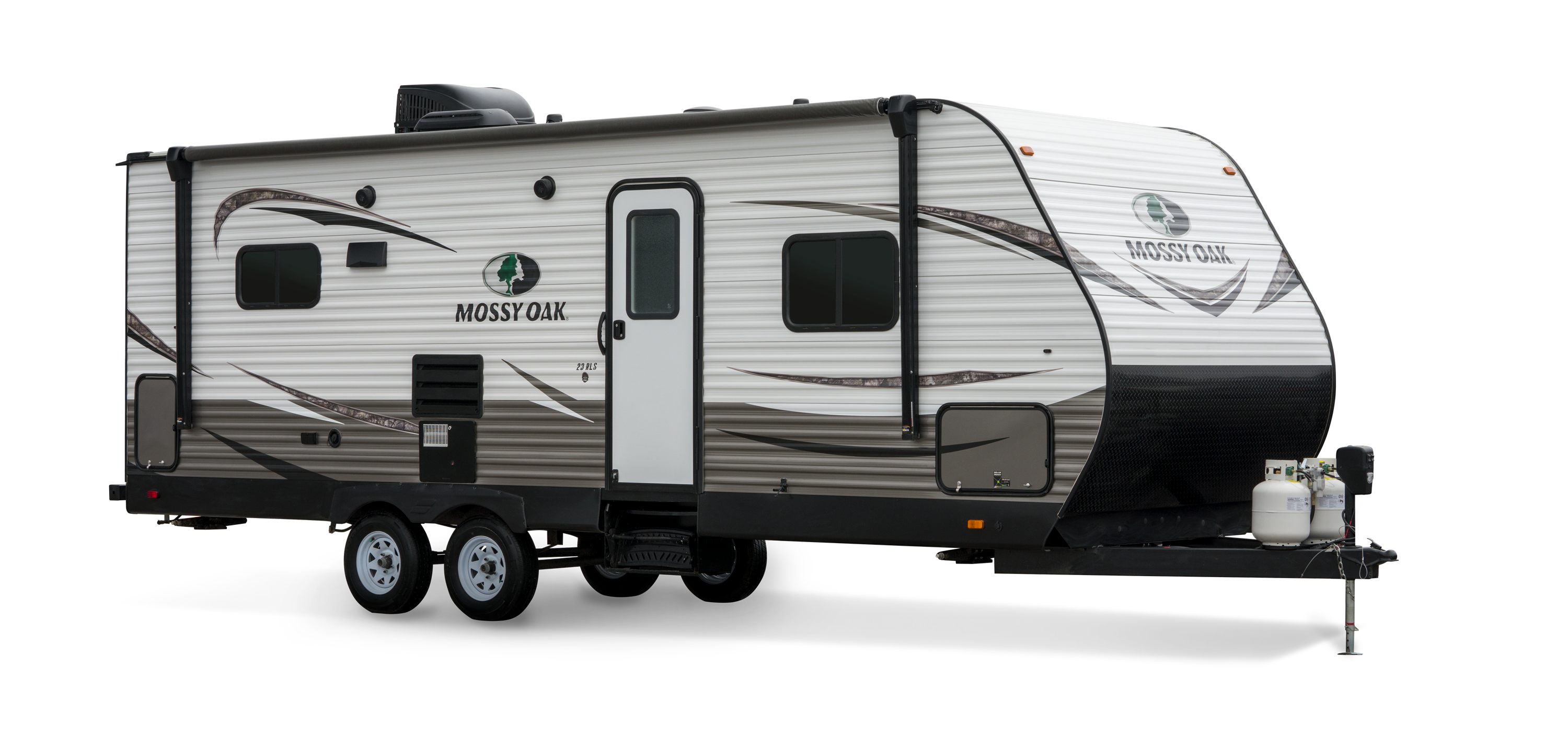 Travel trailers vary in size and can accommodate you both on and off the road. You typically get a larger bed, full bathroom with shower, and a full kitchen. Travel trailers are the perfect choice for those planning on spending extended amounts of time on the road. Depending on the size you get, between 2 and 8 people can sleep comfortably, so these are great for larger traveling families or groups.
Travel trailers vary in size and can accommodate you both on and off the road. You typically get a larger bed, full bathroom with shower, and a full kitchen. Travel trailers are the perfect choice for those planning on spending extended amounts of time on the road. Depending on the size you get, between 2 and 8 people can sleep comfortably, so these are great for larger traveling families or groups.
These are towing vehicles, however, and if you are not familiar with towing, they can be a handful. There are usually driving classes available to help you master driving with a travel trailer in tow if this is the option you have your heart set on. Towing a vehicle has its challenges once you are on the road, so make sure you are comfortable before heading out for your adventures. It also has benefits, since you have a car always with you that you can use.
Fifth Wheel Trailers
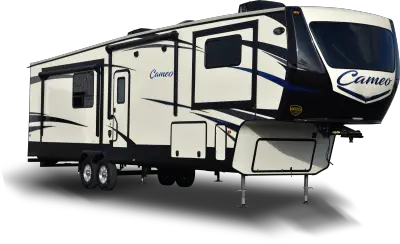 The fifth wheel is essentially where motorhomes meet travel trailers and these are often bigger, wider, and more challenging to tow. You do get the best when it comes to comfort levels though. With maximum room on the road and the ability to sleep up to eight, fifth-wheelers offer the ultimate in terms of on-the-road comfort. Along with the queen or king bed, you also get convertible dinette sets and sofas to allow for additional sleeping space. You also get a full bedroom, bathroom, and kitchen. Because you can tow the fifth-wheeler, you get the added benefit of detaching from the trailer and exploring local areas. Most models also come with slide-out additions to give you even more room once you are parked. Towing these requires a specific type of hitch and can be more challenging than travel trailers. You will need a ‘gooseneck’ hitch to help support and tow the additional weight of these trailers. The issue with it is that it is huge and it is harder to drive in narrow places comparing it with a smaller motorhome. Not all campgrounds can accommodate the length.
The fifth wheel is essentially where motorhomes meet travel trailers and these are often bigger, wider, and more challenging to tow. You do get the best when it comes to comfort levels though. With maximum room on the road and the ability to sleep up to eight, fifth-wheelers offer the ultimate in terms of on-the-road comfort. Along with the queen or king bed, you also get convertible dinette sets and sofas to allow for additional sleeping space. You also get a full bedroom, bathroom, and kitchen. Because you can tow the fifth-wheeler, you get the added benefit of detaching from the trailer and exploring local areas. Most models also come with slide-out additions to give you even more room once you are parked. Towing these requires a specific type of hitch and can be more challenging than travel trailers. You will need a ‘gooseneck’ hitch to help support and tow the additional weight of these trailers. The issue with it is that it is huge and it is harder to drive in narrow places comparing it with a smaller motorhome. Not all campgrounds can accommodate the length.
Conversions
Bus or van conversions are simply these types of vehicles converted into recreational vehicles or motorhomes. You can do this as a do-it-yourself project or you can go to professionals. The DIY route gives you more control over the features, appearance, and cost, but it can be stressful, time-consuming, and tricky. Meanwhile, a professional job is safer in terms of quality and less time-consuming, but with little control over customizability and cost.
Seats are often removed to make room for renovations. After this, the interiors are transformed from that of a regular bus to a comfortable RV that can serve as a living space when traveling. These conversions typically add essential features such as sleeping and seating areas, dinettes, kitchenettes, toilets, water holding tanks, and storage spaces.
You can use different types of vans and buses to make a conversion, as long as they have enough space. Even school buses can turn into schoolies or school bus conversions. Typically, bus and van conversions are used by campers, travelers, and even touring musicians because it is simply convenient to have a place of your own during these situations.
Campervans
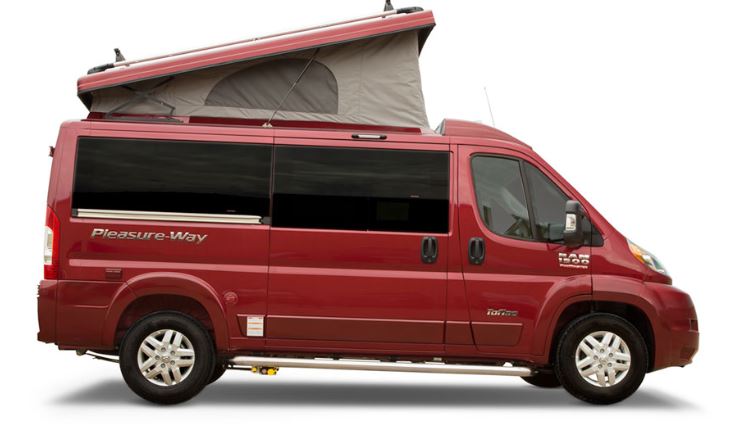 These are Class B vehicles, which means they are smaller than Class A and Class C RVs. These are typically vans modified to provide sleeping, storage, and even cooking areas. However, because these are Class B vehicles, their size cannot compare to conversions and other types of RV. This means that the amenities they offer may also be limited. Some of the facilities you can expect from campervans include folding or pop-out beds, and basic kitchen equipment such as stoves, sinks, and refrigerators.
These are Class B vehicles, which means they are smaller than Class A and Class C RVs. These are typically vans modified to provide sleeping, storage, and even cooking areas. However, because these are Class B vehicles, their size cannot compare to conversions and other types of RV. This means that the amenities they offer may also be limited. Some of the facilities you can expect from campervans include folding or pop-out beds, and basic kitchen equipment such as stoves, sinks, and refrigerators.
To make more room, some campervans have pop-out tents, so you can have more space inside the vehicle. These sometimes go on top of the van or at the side, depending on the owner’s preferences.
Campervans offer a lot of great features because of their compact form. You can easily park it in lots dedicated to vans, unlike full-blown RVs that require special slots. You also do not have to haul trailers. However, keep in mind that these types can be cramped on the inside.
Pop-Up Campers
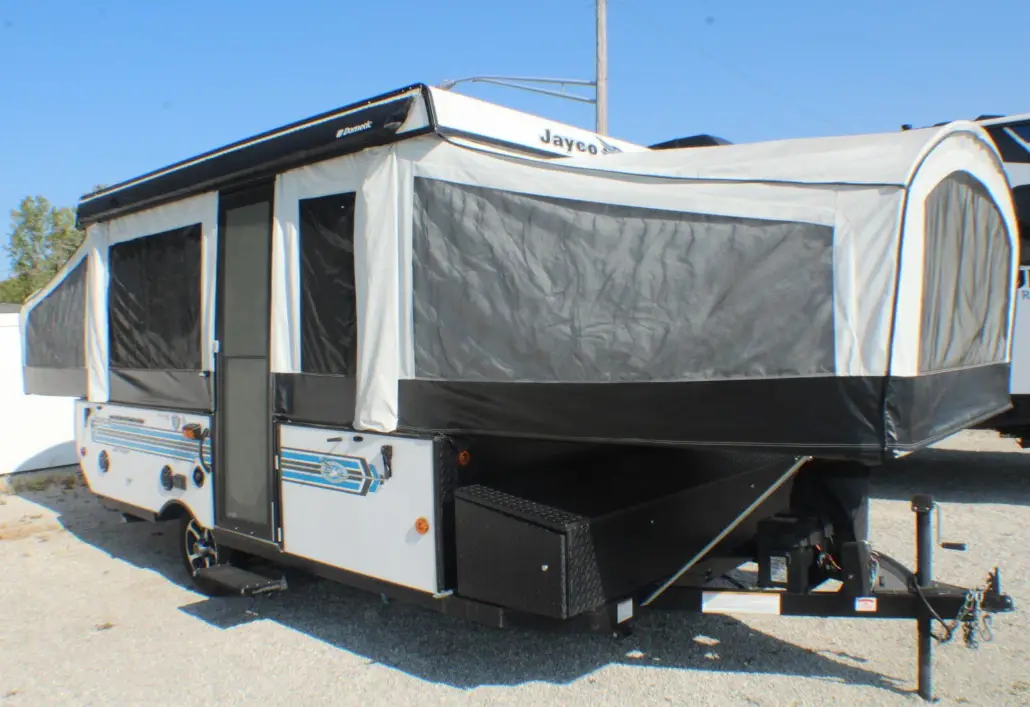 Pop-up campers are essentially trailers, but the main difference is that they come with tents that fold and unfold, thus the term pop-up. When folded in, pop-up campers are smaller than regular trailers, but then can provide the same size of space when popped out. They can come with hard or soft sides, so you can choose which one is more comfortable for your needs and preferences.
Pop-up campers are essentially trailers, but the main difference is that they come with tents that fold and unfold, thus the term pop-up. When folded in, pop-up campers are smaller than regular trailers, but then can provide the same size of space when popped out. They can come with hard or soft sides, so you can choose which one is more comfortable for your needs and preferences.
These campers can have amenities like a basic kitchen, a dinette, and storage space. When popped out, you can have cozy sleeping quarters. Plus, any seating is likely convertible into a small bed, making it a pretty comfortable option. Just don’t expect these to have air conditioning or heating components.
What makes pop-up campers great for many individuals is that they are not only smaller but also lighter than full-on trailers because of their collapsible materials. This means they can be hauled by regular vehicles
Truck Campers
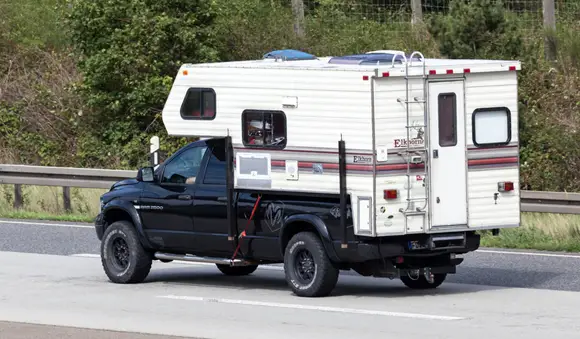 Another type of RV to consider are truck campers. These are attachments you can install to your truck bed. So, yes, these campers are typically compatible with pick-up trucks. These are great if you do not want to haul a trailer or you do not want to drive a campervan or a motorhome. Truck campers are also compact and lightweight but still offer more space compared to your pickup truck alone.
Another type of RV to consider are truck campers. These are attachments you can install to your truck bed. So, yes, these campers are typically compatible with pick-up trucks. These are great if you do not want to haul a trailer or you do not want to drive a campervan or a motorhome. Truck campers are also compact and lightweight but still offer more space compared to your pickup truck alone.
You can get these with hard and soft walls, which can influence how heavy or light they will be. What’s sure is that they are lighter than haulers. These do not only go on your truck bed but they are built to extend over your car roof, as well. This gives more room for sleeping and storage. Plus, some attachments can pop up for more headway. They also have support, which you can attach to the ground, so you can detach them from the truck and stand on their own.
What you should know is that the room they provide is still limited compared to full-sized RVs and bus conversions. Nevertheless, pickups with truck campers are easier to park.
Toy Haulers
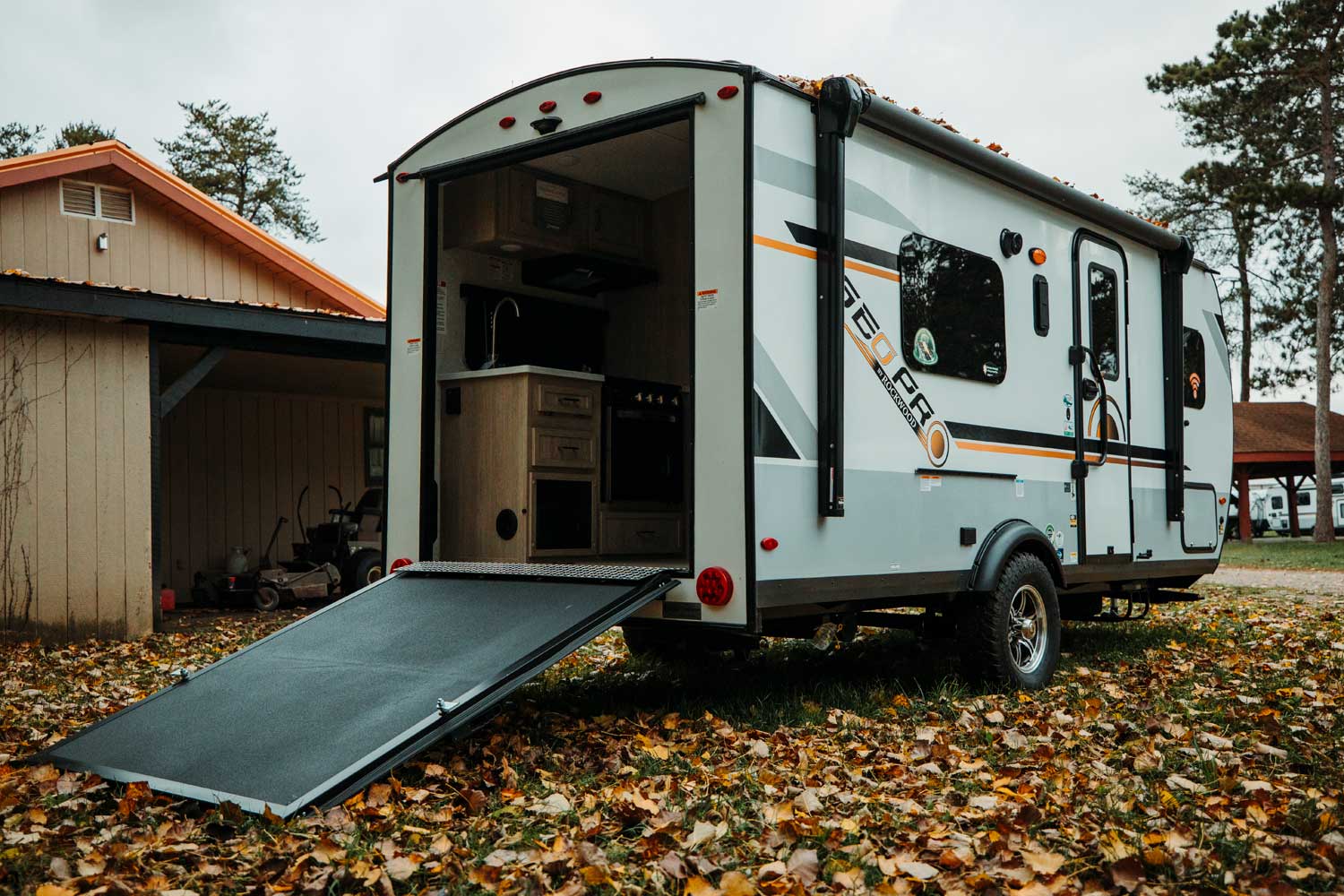 Toy haulers are recreational vehicles or trailers that feature amenities, just like regular RVs or trailers. The difference is that they have storage space for “toys” which refer to recreation vehicles like canoes, dirt bikes, kayaks, mountain bikes, and ATVs. These can be big enough to contain two or more toys, even with a small living area fitted in.
Toy haulers are recreational vehicles or trailers that feature amenities, just like regular RVs or trailers. The difference is that they have storage space for “toys” which refer to recreation vehicles like canoes, dirt bikes, kayaks, mountain bikes, and ATVs. These can be big enough to contain two or more toys, even with a small living area fitted in.
Keep in mind that they can be pretty heavy because they are constructed with tough materials that could hold outdoor recreational vehicles with minimal issues. They also need to be fitted with security locks to protect high-value items and people, as well as prevent them from moving around while driving.
Just keep in mind that while these may have a bit of living and sleeping areas, the recreational vehicles may take a lot, so you might find the interiors pretty cramped, depending on the type. You have more space if you are only bringing mountain bikes, but ATVs can take up more room. Nevertheless, you can take your toy hauler on a trip even if you are not bringing these smaller vehicles with you, giving you more room inside.
Teardrop Campers
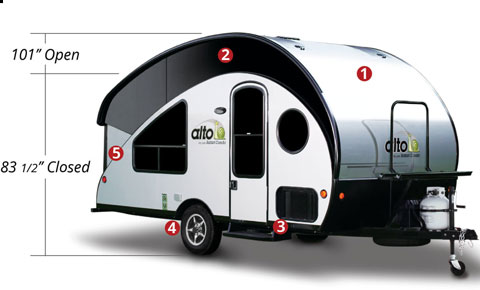 Hauling campers can be burdensome to the hauler vehicle, especially if the trailers are big and heavy. Plus, their shape can make it more difficult to haul because of aerodynamics. Teardrop campers offer a visually pleasing option that plays in favor of aerodynamics. It got its name from its shape, which is tapered at the front and rounded at the end.
Hauling campers can be burdensome to the hauler vehicle, especially if the trailers are big and heavy. Plus, their shape can make it more difficult to haul because of aerodynamics. Teardrop campers offer a visually pleasing option that plays in favor of aerodynamics. It got its name from its shape, which is tapered at the front and rounded at the end.
Because of their shape, these typically have limited space. Some of the most common amenities include a sleeping area for at least two adults, a basic kitchenette, and a bit of storage space. This can be pretty offputting, but they are definitely lighter than regular haulers and pretty easy to park.
Whatever adventure you are planning, there is an RV for you. Once you know your budget, your travel route, and who is going with you, you can decide on the vehicle for you.


